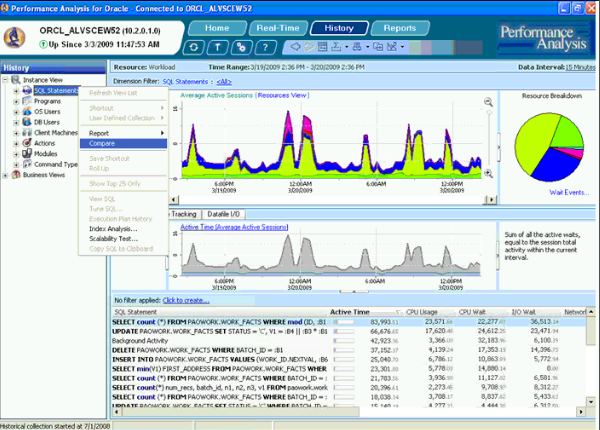Optimizing Oracle Performance: A Comprehensive Guide to Monitoring
As a database administrator, monitoring the performance of your Oracle database is crucial for ensuring smooth operations and resolving issues proactively. Whether you’re managing a small scale application or a large enterprise system, understanding how to effectively monitor Oracle performance can make a significant impact on the overall stability and efficiency of your database.
In this comprehensive guide, we’ll explore the key components of Oracle performance monitoring and provide practical tips for optimizing your database’s performance.
Why Monitor Oracle Performance?
Monitoring Oracle performance allows you to identify potential issues such as bottlenecks, resource constraints, and inefficient queries before they escalate into critical problems. By proactively monitoring key performance metrics, you can optimize your database’s performance, enhance user experience, and minimize downtime.
Key Performance Metrics to Monitor
- CPU Usage: Monitor CPU utilization to ensure that your Oracle database has enough processing power to handle incoming requests efficiently.
- Memory Usage: Keep an eye on memory usage to prevent instances of memory leaks and optimize performance.
- Disk I/O: Monitoring disk I/O operations can help you identify potential bottlenecks and optimize storage configurations.
- SQL Performance: Track SQL query execution times, indexing efficiency, and cache hits to optimize query performance.
Tools for Oracle Performance Monitoring
Oracle provides a range of tools to monitor and analyze database performance, including Oracle Enterprise Manager, SQL Developer, and Automatic Workload Repository (AWR). These tools offer real-time monitoring, performance analysis, and diagnostic capabilities to help you identify and resolve performance issues effectively.
In addition to Oracle’s native tools, third-party monitoring solutions such as SolarWinds Database Performance Analyzer and Quest Foglight for Oracle provide advanced monitoring features and customizable dashboards for a comprehensive view of your database’s performance.
Best Practices for Oracle Performance Monitoring
- Establish Performance Baselines: Monitor key metrics regularly to establish baseline performance levels and identify deviations.
- Implement Alerting Mechanisms: Set up alerts for critical performance thresholds to receive notifications and address issues promptly.
- Regular Performance Tuning: Continuously optimize database performance by analyzing and fine-tuning SQL queries, indexing strategies, and configuration settings.
- Capacity Planning: Forecast resource usage trends and plan for scalability to accommodate future growth and avoid performance degradation.
Conclusion
Monitoring Oracle performance is a critical task for ensuring the optimal functioning of your database system. By implementing best practices and leveraging monitoring tools effectively, you can proactively address performance issues, optimize database performance, and enhance the overall user experience.
Stay proactive, stay informed, and stay ahead of performance challenges with a robust Oracle performance monitoring strategy.
